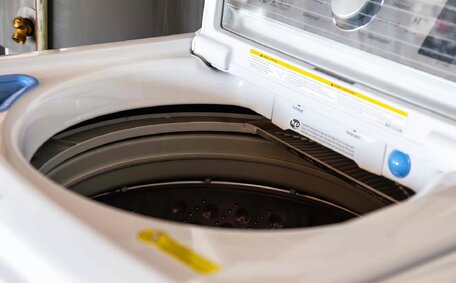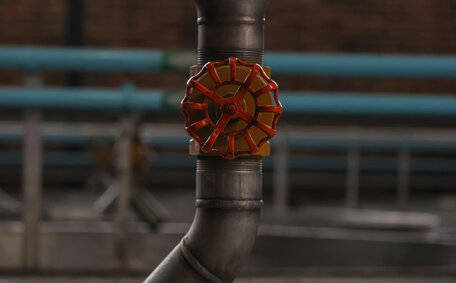Introduction to Hot Water System Installation
The installation of a new hot water system is a critical aspect of home maintenance. The experts at Pennant Hills Plumbing recognise the importance of an efficient and properly functioning system for your home comfort.
Selecting the right hot water unit involves key considerations to achieve optimal performance and energy efficiency.
The optimal placement of your hot water system within your home is crucial to minimize heat loss and guarantee a consistent supply of hot water.
At Pennant Hills Plumbing, Our licensed technicians combine professionalism, training, and experience to install premiere hot water systems, adhering to all current building codes and regulations.
Our top priority is to deliver exceptional customer service, ensuring your satisfaction from the start.
This guide outlines essential considerations for hot water system installation to secure a reliable supply for the long term.
Utilize our expert tips and recommendations to choose a location that optimizes convenience and energy efficiency.
Choosing the Optimal Location Based on Layout, Plumbing and Usage
For optimal efficiency, position your new hot water system near primary usage areas, taking into account your home’s layout, plumbing infrastructure, and usage habits.
Ideally, the best place for your nearest hot water unit is close to the tap where you need immediate hot water.
Examine your existing plumbing to identify the shortest pipe routes from your water system to primary outlets, since longer pipes contribute to heat loss. Strategic placement near frequently used outlets enhances efficiency.
Additionally, consider your household’s hot water consumption patterns, such as locating the system near bathrooms with heavy morning use, and tailor the placement accordingly.
Our team at Pennant Hills Plumbing offers expertise in hot water system installation and location advice, ensuring your new system complies with all regulations and building codes.
Meeting Safety Standards and Building Codes
Compliance with all relevant safety standards and building codes is crucial when installing a new hot water system. This ensures your water system is compliant, minimises risk, and provides reliable performance.
In Australia, installations must comply with AS/NZS 3500, and gas water systems with the stringent AS/NZS 5601.1 requirements.
Some key areas covered by the codes include:
- Water temperature and pressure controls
- Relief valves
- Condensation management
- Gas appliance clearances and ventilation
- Electrical safety and connections
- Materials and sizing requirements
Our Pennant Hills Plumbing licensed technicians guarantee your installation complies with current standards and manage all necessary approvals and documentation.
We provide Certificates of Compliance post-installation for your peace of mind, confirming the safety, reliability, and efficiency of your new gas or electric hot water system.
For inquiries about standards or building codes, contact us. Our expertise ensures your system meets all requirements.
Selecting the Right System Type and Capacity
Selecting the appropriate type of hot water system — be it gas, electric, solar, or heat pump — is essential and should align with your household’s requirements, budget, and energy goals.
Gas hot water systems offer efficient performance for large families, while electric systems deliver instant hot water. Solar and heat pump systems present energy-efficient alternatives, with solar necessitating ample roof space.
Choose a system capacity that takes into account your home’s size, bathroom count, peak usage, and occupancy, ensuring it can serve multiple taps simultaneously. Around 25-35L per person is a good benchmark for storage tanks.
Utilise the Australian government’s hot water rebate when installing efficient systems. We’ll advise on eligible models and offer replacement quotes to ensure maximum savings.
Our skilled technicians will assist in selecting the ideal system for your home, managing the installation from start to finish and ensuring compliance. Get in touch with Pennant Hills Plumbing for a tailored solution.
Key System Components and How They Work
A hot water system consists of several key components that collectively heat and supply hot water. Understanding their functions, especially when contemplating solar options, is crucial for determining the best installation placement.
The main components include:
- Hot water tank - Holds and heats water for use throughout your home. Gas systems such as continuous flow heaters utilise designs with a hot water heater inside, employing burners for effective heating. Electric water heaters have heating elements.
- Thermostat - Manages temperature water control by toggling the heating on and off.
- TP valve - A pressure relief valve that activates when the system’s pressure or temperature elevates excessively.
- Cold water inlet - Brings cold water into the system.
- Hot water outlet - Takes heated water out to pipes and taps.
- Anode rod - Metal rod that protects against corrosion.
- Access covers - Allow inspection and maintenance of interior components.
- Insulation - Reduces standby heat loss from the tank.
Understanding the function of each component informs the ideal placement. For example, the tank needs clearance for element and burner servicing. Understanding how each part of the water heater can function ensures safe, compliant installation.
The experienced technicians at Pennant Hills Plumbing are intimately familiar with all components needed to install your hot water system. We handle complete installations and can advise on parts placement as needed. Get in touch for professional help installing a reliable, efficient hot water system.
Installation Process and Best Practices
When installing a new hot water system, following proper process and best practises is key for safety, efficiency, and longevity. Here is an overview of the installation process from the experienced plumbers at Pennant Hills Plumbing:
- Select the ideal location based on usage, existing plumbing, and building codes. Place the unit strategically to satisfy which tap want closest hot, ensuring close proximity to frequently used outlets.
- Ready the vital plumbing electrical connections - including the cold water inlet, hot water outlet pipes, relief valve drain line.
- Mount and secure the hot water unit safely at the location your home setup dictates, whether on a wall or platform.
- Connect all plumbing per code, ensuring watertight seals. Install insulation on hot pipework.
- Wire any electrical supply and controls needed for electric or heat pump hot systems.
- Check all fittings and valves for leaks during pressure testing. Verify proper drainage.
- Flush and sanitise the water tank thoroughly before use.
- Complete all compliance paperwork for council approvals.
Our best practice recommendations for installing a hot water system are as follows:
- Employ qualified professionals like your plumber from Pennant Hills Plumbing for reliable service.
- Size the system correctly based on usage and number of occupants.
- Insulate hot water lines to minimise heat loss.
- Install a tempering valve and pressure limiting valve for added safety.
- Maintain service clearances and access for maintenance.
- Register for government rebates on eligible energy efficient systems.
By following proper hot water system installation process and best practises we supply install, and so highly recommend, you can enjoy an efficient, high-performing, and reliable system for years to come. Contact our team at Pennant Hills Plumbing to learn more or schedule professional installation services.
Ensuring Proper Maintenance and Accessibility
Regular inspection and maintenance are critical for the safe and efficient operation of your hot water system. Easy accessibility is essential for routine and emergency servicing.
We recommend scheduling annual servicing of your hot water unit. Our licenced plumbers at Pennant Hills Plumbing can inspect the system components, check for leaks or corrosion, flush the tank, and perform necessary tune-ups. Preventative maintenance helps maximise performance and longevity.
For maintenance accessibility, be sure to leave clearances of at least 500mm in front and around the unit during installation. This allows easy access to parts like heating elements, anode rods and pressure valves when servicing is required. Providing proper clearance facilitates emergency access, ensuring the get job done always adheres to safety protocols.
The hot water system should have an isolation valve installed on the cold water supply line.
This enables a prompt shut off in the event that repairs become necessary. An electrical isolation switch is also a practical safety feature for electric water heater systems. Having accessible shutoff valves and switches simplifies both routine and emergency maintenance.
By scheduling regular hot water system maintenance and ensuring accessibility, you can keep your system running safely and efficiently for years to come. Contact our team at Pennant Hills Plumbing to learn about our maintenance plans or to book your annual service appointment.
Our licenced plumbers at Pennant Hills Plumbing can inspect the system components, check for leaks or corrosion, fm with adequate capacity to allow for additions like a new bathroom, laundry or kitchen can prevent the need for expensive retrofitting down the road.
Our experts at Pennant Hills Plumbing recommend selecting a hot water system that caters to realistic future expansion plans. This provides a buffer so that increased usage from an additional bathroom or new water outlet won’t max out your existing system capacity.
It’s also good practise to oversize pipework where feasible when installing the system. This makes it simpler to add new branches and extensions if needed without replumbing the entire home. Consider more than the present needs where extensions like new wings or second stories may go to allow routing pipework in anticipation.
Existing systems can also be retrofitted to increase capacity if necessary. We can install additional storage tanks or solar preheaters to boost output.
However, it’s most cost effective to install a system sized for growth from the start. Our team is happy to provide professional advice on selecting adequate hot water systems for future plans.
With careful planning during installation, your hot water system can grow as your family does. Contact Pennant Hills Plumbing to ensure your new system accommodates both your current and future hot water usage needs.
Maximizing Efficiency Based on Energy Source
Heat pump water heaters can reduce energy use by up to 65%, suitable for spacious areas with controlled climates. Properly angling solar collectors north in the southern hemisphere maximises efficiency. Our expertise helps homeowners save energy and costs with eco-friendly systems.
In homes with natural gas availability, gas water systems commonly offer enhanced efficiency. Choosing the right energy source significantly impacts your hot water system’s efficiency.






